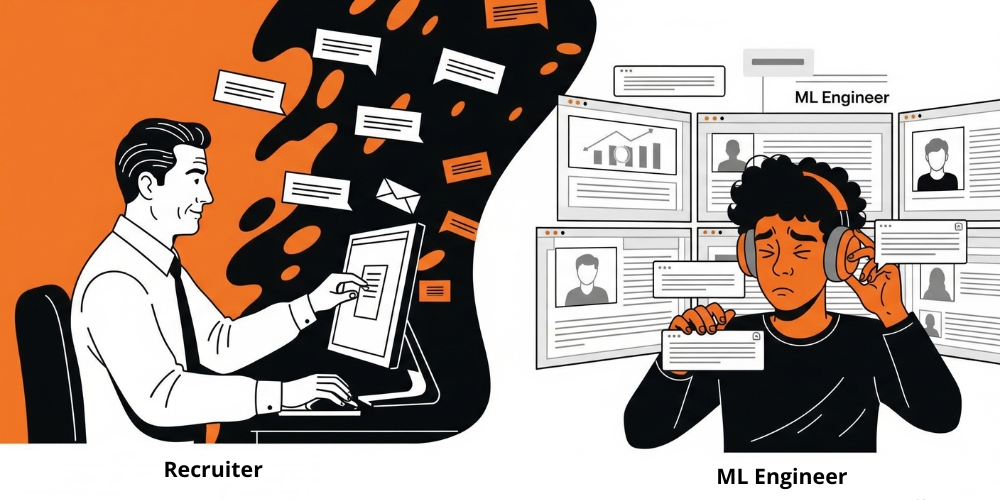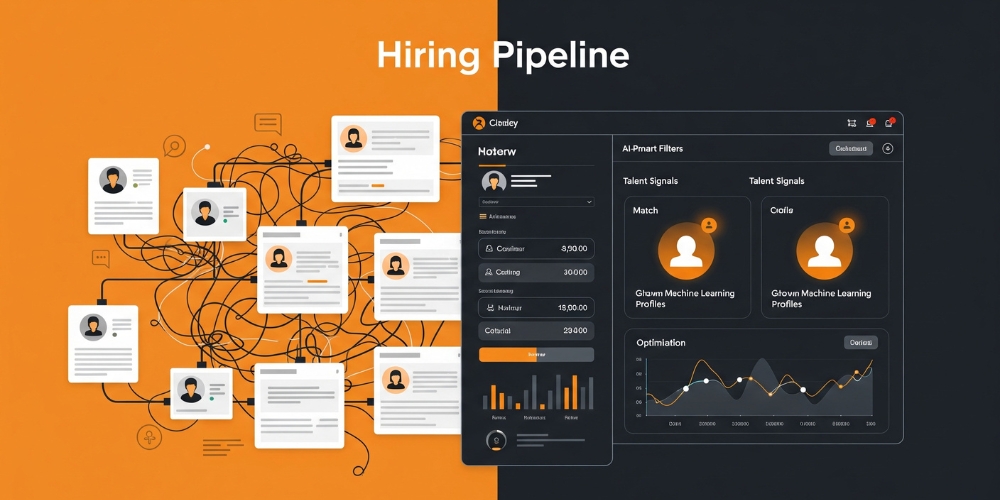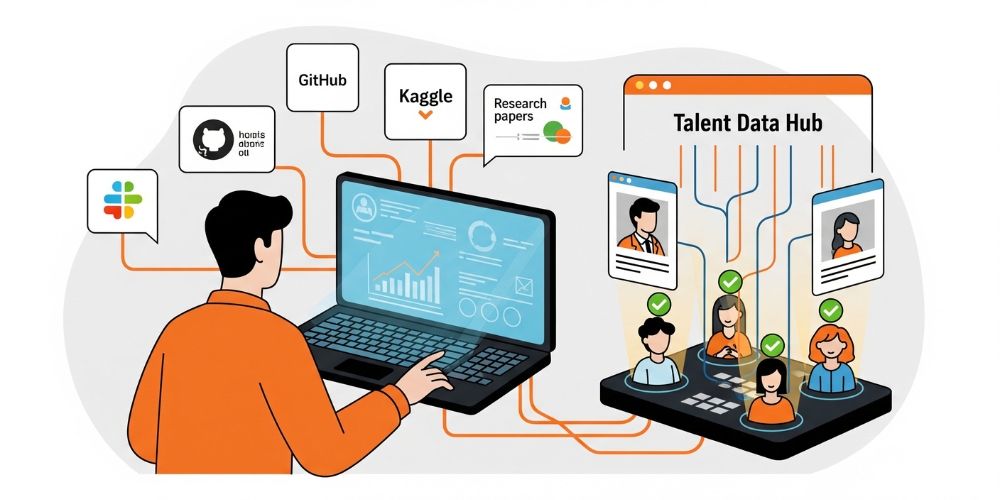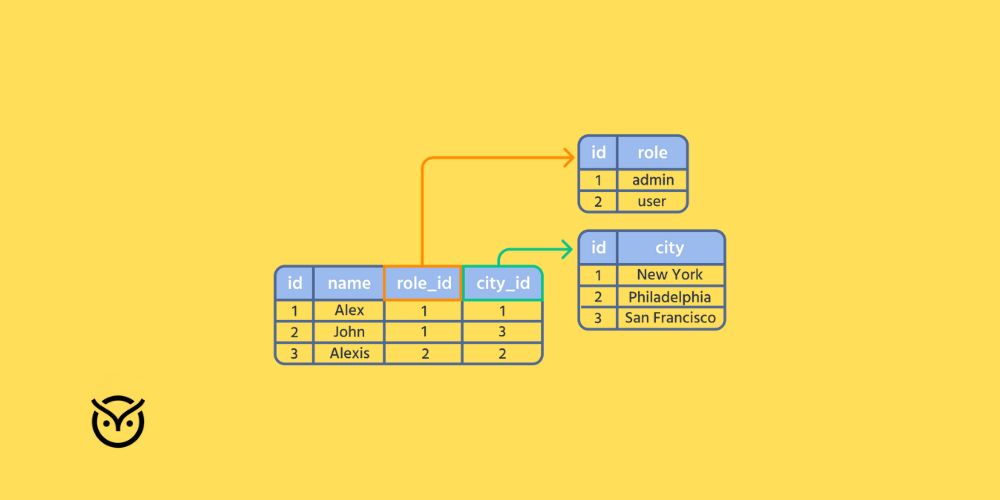
TL;DR
- Machine learning recruitment is tough because demand is outpacing supply.
- Top ML talent ghosts job posts when roles are vague or outreach feels irrelevant.
- Fixing this needs clearer messaging, targeted platforms, and project transparency.
- Use tools that cater to deep tech and AI-focused candidates.
- A skilled machine learning recruiter or agency can be the key to hiring top talent.
Hiring for machine learning roles has never been harder. Companies across industries are chasing the same pool of data scientists, ML engineers, and AI researchers and losing them fast. As a result, machine learning recruitment efforts often end in silence. You post the job, send the outreach, and… crickets. Even the best-looking roles get ghosted.
Good news: you can turn things around with a smarter approach. Whether you’re starting fresh or growing fast, the right machine learning recruiter tactics can help you attract and keep top ML talent. This blog will show you why candidates ghost and how to fix it.
Are You Losing ML Talent?
Take this 3-question quiz to find out if your ML hiring strategy needs work.
Why Machine Learning Talent Is So Hard to Hire

A Skills Gap That’s Not Closing Fast Enough
The biggest hurdle in machine learning recruitment is simple: there just aren’t enough people with the right skills. A 2024 Nash Squared / Harvey Nash survey found that over 50% of IT leaders reported a significant shortage of AI talent, a sharp rise from 28% in the previous year, making AI the fastest-growing skills gap in over 15 years.
To add to this, Randstad’s global workforce report revealed that while 75% of companies are adopting AI, only about one-third say their teams are career-ready with recent AI training or experience. This highlights not only a hiring shortage but also a training and development lag.
The result? Roles for ML engineers, AI researchers, and data scientists stay open longer, attract fewer qualified applicants, and cost more to fill.
The Competition Is Global and Fierce
ML candidates are fielding offers from tech giants, startups, and research labs across the globe. They’re being approached by every machine learning recruiter, often with roles that sound the same. What’s more, companies offering remote or hybrid setups are scooping up global talent faster than those sticking to in-office mandates.
Even a great offer can get drowned out. That’s why machine learning recruitment agencies with niche experience are becoming critical. They know how to position your job in a way that resonates with top-tier talent, not just generically “qualified” applicants.
Most ML Candidates Don’t Want Traditional Jobs
This is a deep tech field. Candidates here aren’t just chasing salaries; they’re chasing meaningful problems to solve. They want to work on cutting-edge models, publish research, or contribute to open-source projects. When machine learning in recruitment focuses only on compensation or brand name, it misses what truly motivates these individuals.
If you can’t clearly communicate the scope and impact of your project, your ideal hire will move on without blinking.
They Value Autonomy and Culture
Many ML engineers thrive in teams where experimentation is encouraged. They look for engineering-first organizations with smart leadership, fast iteration cycles, and a strong peer network. Without these, your role becomes just another box on their LinkedIn feed.
Top talent also wants a say in how models are deployed, how data is used, and whether AI efforts are actually aligned with business outcomes. Smart machine learning recruiting focuses on these cultural indicators, not just checklists of Python, TensorFlow, and AWS.
Resume Scanning Doesn’t Work Anymore
Traditional filtering systems aren’t built for deep tech roles. Candidates with GitHub stars, research papers, or hackathon wins often get missed by generic ATS systems. That’s where a smart ML and AI recruitment company makes a real difference, as they know how to spot potential beyond what’s on a CV.
They also understand how to use automation and machine learning with recruitment to refine candidate sourcing, without falling into the trap of keyword-matching madness.
ML Talent Tug-of-War
Play as a recruiter. Can you keep the candidate interested?
Why ML Candidates Ghost Job Posts and Recruiters

Generic Messaging Doesn’t Cut It
ML talent is bombarded with recruiter messages every week, many of them nearly identical. Imagine being an ML engineer and getting yet another message that says, “I came across your profile and thought you’d be a great fit.” That’s not outreach. That’s noise.
Machine learning recruiters who fail to tailor their messaging to the candidate’s work, interests, or past projects lose their chance at engagement in the first 10 seconds.
Unclear Role Expectations
Many ML job posts sound impressive but lack substance. Phrases like “Lead our AI transformation” don’t tell candidates what they’ll actually do. Top talent wants clarity: what models they’ll build, which tools they’ll use, and how success is measured.
If your machine learning recruitment process can’t clearly articulate the technical challenge, the opportunity dies in the inbox. Candidates assume the company either doesn’t know what it wants or has internal chaos, which, in tech circles, is a giant red flag.
No Visible Engineering Culture
When ML talent evaluates job posts, they don’t just look at responsibilities or compensation. They look for signs of intellectual rigor and growth. If your job post doesn’t mention peer-reviewed research, model ownership, MLOps maturity, or links to engineering blogs, GitHub activity, or published papers, it sends a message: “We’re not serious about ML.”
This is where deep tech recruitment tactics matter. You’re not just selling a role. You’re selling a technical environment where ideas can be tested, iterated, and scaled.
Silence After Initial Outreach
Another major reason ML candidates ghost is… You ghosted first. Many companies send outreach or even conduct a screening call, then disappear for weeks. These candidates are already in high demand. If you don’t follow up promptly, you’re forgotten or written off.
Spot the Ghosting Mistake
Flip the cards and match recruiter messages with candidate reactions. Which one gets a reply?
How to Fix Your Machine Learning Recruitment Strategy

Ditch the One-Size-Fits-All Job Post
Craft job descriptions that speak directly to the ML audience. Mention the models and tech stacks used (e.g., PyTorch, Hugging Face, AWS SageMaker), share examples of past AI projects, and highlight the team’s mission. Let candidates know what business problems they’ll be solving and what success looks like.
Avoid marketing fluff. A machine learning recruitment agency can help translate internal jargon into language that excites deep tech candidates without overwhelming them with buzzwords.
Personalize Your Outreach Every Time
Stop sending cold outreach without context. Instead, reference a candidate’s Kaggle projects, open-source contributions, or published papers. Mention what stood out in their portfolio and how your role connects to their interests.
Machine learning recruiters who treat outreach like relationship-building (not transactions) see significantly higher response rates.
Shorten and Streamline the Process
ML professionals don’t want to jump through eight interview loops. Keep your hiring funnel efficient. One tech screen, one project challenge (if needed), and a final decision. Communicate timelines upfront, and stick to them. Use automation and machine learning with recruitment platforms to manage workflows, schedule interviews, and provide real-time updates.
Sell the Mission, Not Just the Role
Smart candidates want to know why your company is investing in machine learning. What’s the vision? Who supports it internally, just the product, or also the C-suite? What real-world impact will their models have?
Use your career pages and social profiles to spotlight ML case studies, model outcomes, and interviews with current team members. If you’re partnering with an ML and AI recruitment company, ensure your brand story is consistent across all touchpoints.
Don't Underestimate Emerging Talent
Yes, hiring senior ML engineers is hard. But if you keep ignoring junior and mid-level candidates, you're missing a huge opportunity. Many of today’s strongest engineers came from PhD research or side projects, not just unicorn startups.
Build pathways for growth. A strong training program can turn a smart junior candidate into a powerhouse. Leading firms like DeepMind and Anthropic routinely invest in homegrown talent through mentorship and structured onboarding.
Choose Your Recruiter Path
Make decisions as a recruiter. Will you land top ML talent—or get ghosted?
Tools and Platforms That Attract ML Talent

GitHub & Kaggle
Many of the best ML engineers don’t hang out on LinkedIn. They’re publishing notebooks on Kaggle, contributing to open-source models on GitHub, or building personal websites with model demos. Some machine learning recruiting tools now let you source candidates based on GitHub stars, projects, or Kaggle notebooks, not just traditional resumes.
AI-Specific Job Boards
Skip the generic job boards. Instead, post roles in communities where ML talent actually looks. Consider:
- Papers with Code Jobs – Ideal for research-heavy roles
- ML Jobs – A niche board for AI and machine learning roles
- WeWorkRemotely – AI/ML – Good for remote-first hiring
Slack & Discord ML Communities
There are thriving ML communities on platforms like Slack and Discord where job boards and hiring events are regularly shared. Examples include:
- ML Collective
- DataTalksClub
- Artificial Intelligence Discord (over 100K members)
Active participation from your machine learning recruiter, not just a job posting, can build brand trust and spark direct conversations.
Talent Intelligence Platforms
Use platforms that combine talent data with behavioral signals to help you spot active or passive ML candidates based on real interest, not just keyword filters. Tools like SeekOut, HireEZ, and AmazingHiring gather talent data from diverse sources such as coding platforms, research papers, and patent databases.
This allows machine learning recruiters to craft personalized outreach and engage candidates at the right moment, reducing ghosting and improving response rates.
AI-Powered Screening Tools
To avoid bias and misfit screening, many companies are now using AI-powered tools like Metaview, CodeSignal, or CoderPad. These platforms help evaluate actual coding ability and model-building skills, not just academic degrees or previous company names.
This approach reflects the future of machine learning in recruitment, using AI to vet AI talent fairly.
Tool Matchmaker for ML Recruiting
Choose your goal to discover the right tools for attracting ML talent.
ML Recruitment Messaging Tips (That Actually Work)

Lead with Technical Substance
When messaging machine learning talent, skip generic phrases like “exciting opportunity” or “fast-growing startup.” These often turn off experienced engineers. Focus on what matters to them: the models they’ll work on, the data they’ll handle, and the impact their work will have.
Example:
“We’re deploying transformer-based models to optimize predictive maintenance for logistics fleets. Your work on time-series forecasting caught our attention. Would love to explore a fit.”
This shows you understand their work and aren't just another machine learning recruiter fishing for resumes.
Personalize Based on Their Projects
Don’t just reference their job title. Go deeper. If they’ve contributed to Hugging Face, published on arXiv, or ranked high on Kaggle competitions, mention it. That level of personalization cuts through the noise.
Be Transparent About the Role
Top ML candidates hate bait-and-switch tactics. If you’re hiring for a data analyst but label it as an “ML engineer” role, they’ll know, and they’ll ghost you. Use accurate titles, realistic expectations, and clear tech stacks.
Mention things like:
- Size of data sets
- Tooling and libraries used
- Stage of model development
- Deployment readiness
- Cross-functional team dynamics
This level of detail shows your machine learning recruitment process respects their time and expertise.
Respect Their Time (and Attention Span)
Keep initial outreach under 150 words. Get to the point, share a link to the JD, and leave the door open for conversation. Don’t ask for resumes in the first message. Don’t schedule interviews before you’ve even had a conversation.
Use messaging platforms where they already are: GitHub, Twitter (X), email, and Slack. Avoid overusing LinkedIn InMail, which ML talent increasingly views as spammy.
End with a Human Touch
How you close your message matters. Skip the usual “Let me know if you’re interested” and try something like,
“I’d love to hear what kind of work excites you, even if this isn’t the right fit right now.”
This creates space for honest replies and keeps the door open, which is the hallmark of a great machine learning recruiter.
Rewrite the Message Challenge
Drag better phrases into the email to make it more appealing to ML candidates. Can you improve the response rate?
Subject: [Drag subject line]
Hello,
I came across your profile and wanted to reach out about an [Insert opener]. We’re currently hiring and think you'd be a great fit.
You’d be working on [Insert project detail]. Let me know if you’d like to connect.
Regards,
Recruiter Bot
Conclusion
Machine learning recruitment is no longer just about resumes. It’s about earning attention, trust, and credibility in a highly competitive, technical field. To succeed, companies must rethink how they attract and engage ML talent.
This means ditching generic posts, using deep tech recruitment tools, and creating a culture ML engineers want to join. Need support? A specialized machine learning recruitment agency or ML and AI recruitment company can help you hire smarter and faster.
FAQs
ML engineers ignore recruiters mainly because of generic outreach, irrelevant roles, and lack of technical clarity. Most receive dozens of messages per month, and unless the message is tailored to their experience and interests, it gets ignored.
Technical challenge and impact – Are they solving real-world problems or just tuning dashboards?
Autonomy and culture – Is there room for experimentation and growth?
Compensation and equity – Especially for senior roles, clear and competitive packages matter.
They also care deeply about ethical AI practices and model ownership. Job offers that touch on talent data transparency and model accountability tend to stand out.
Hiring an ML engineer typically takes between 42 to 65 days, varying by seniority and region. These roles often take longer to fill than standard engineering positions because of in-depth technical evaluations, multiple interview rounds, and fierce competition for top talent.
That said, with the help of a machine learning recruitment agency or proper automation and machine learning with recruitment tools, companies can cut this timeline down significantly, sometimes by 30% or more.
Yes, if you have the right environment for learning. Hiring junior talent and investing in training can solve long-term pipeline problems. Junior ML professionals often bring fresh research perspectives and are more adaptable to internal workflows.
Many successful AI companies like Hugging Face, Cohere, and DeepMind have apprenticeship-style tracks for growing internal ML talent. With the right mentorship structure, hiring junior engineers through a machine learning recruiter can be a highly cost-effective and sustainable strategy.




